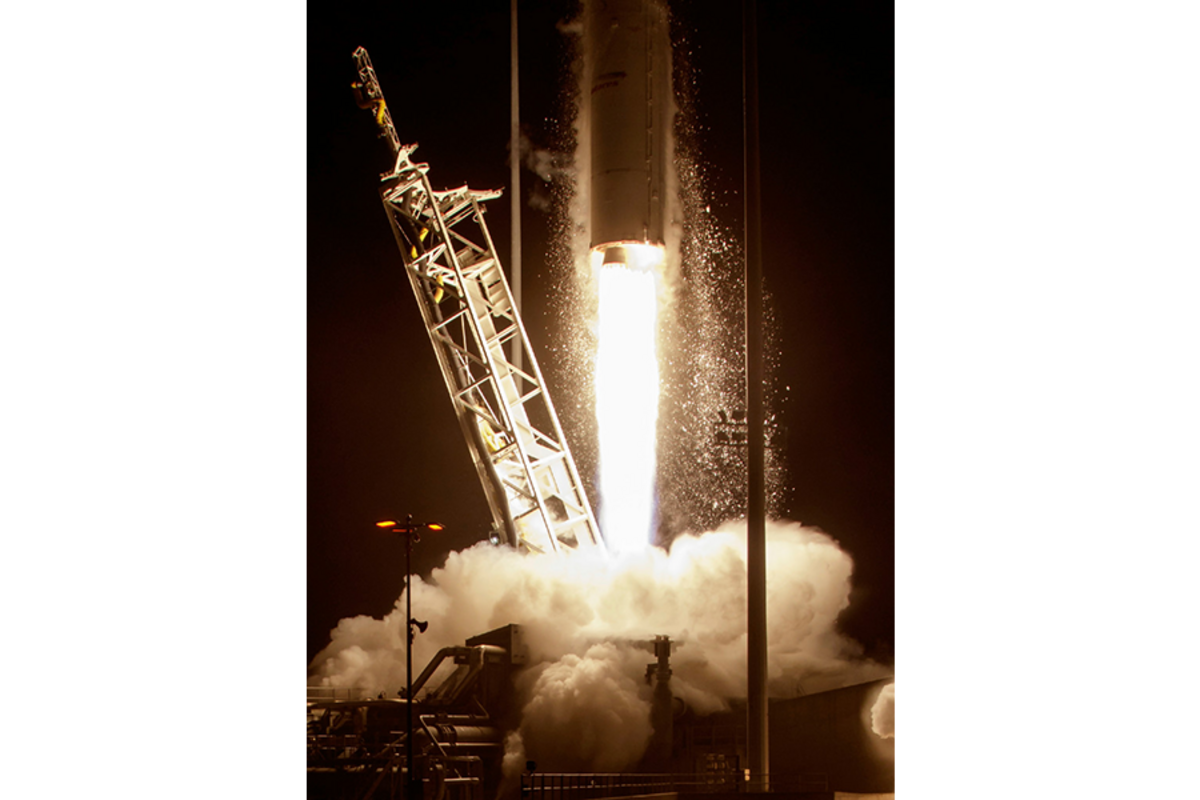Two years after disaster, Antares launch marks rocket's return to space
Loading...
Private spaceflight company Orbital ATK took to the skies again on Monday, after a tragic explosion seconds after lift off in 2014 grounded operations for two years.
Monday’s launch saw Orbital’s Antares rocket propel the company’s signature Cygnus cargo capsule towards the International Space Station for a resupply trip. After the launch explosion that occurred two years ago, Orbital’s successful return to space was crucial for the company’s future.
Yet despite the pressure, company officials told the press that they were certain the rocket they’d worked on for more than a year could stand the test.
“We’re always nervous, but we wouldn’t have a rocket out there if we weren’t confident ,” said Antares program manager Mike Pinkston on Saturday.
Monday’s launch took place at NASA’s Wallops Flight Facility on Wallops Island, Va., where Orbital’s disaster had taken place just two years prior.
Although the launch was originally scheduled to take place last week, it was delayed first by a hurricane and then by a faulty cable. Finally, the Antares rocket took off without a hitch on Monday night at 7:45 p.m.
Last week, the ���Ǵ��� Science Monitor’s Ellen Powell detailed the importance of achieving a successful launch, both for Orbital ATK and for NASA’s contract endeavors. She wrote:
“For Orbital ATK, it’s more than an impressive display. Two years ago, the commercial spaceflight company suffered a setback when a liquid oxygen turbopump exploded, causing the Antares rocket to fall back to the launchpad within seconds of liftoff. Its cargo, intended for the International Space Station, was destroyed in that followed. Since then, the company has retooled – and hopes to prove that it is now back on track.
The stakes look high, not only for the company but also for NASA. The agency has been working to increase public-private cooperation in space, including contracting with spaceflight companies to supply the International Space Station with cargo. If the Orbital launch fails, it casts doubt on the viability of that plan.”
Fortunately, the new and improved Antares 230 rocket proved to be worth the wait. Redesigned with updated Russian engines made by a new supplier, Energomash, Antares boosted more than 4,000 pounds of cargo into orbit .
After entering orbit, the spent rockets separated from the Cygnus capsule, which will orbit the Earth every 90 minutes until a conflicting delivery to the International Space Station (ISS) by a Russian Soyuz craft is out of the way. Then, Cygnus will deliver its load of science experiments, food and supplies, and space station hardware to the station.
Orbital hasn’t been absent from the space scene – it has continued to deliver supply loads to the ISS over the past two years using other company’s rockets. The rebirth of Antares, however, will allow the company to be more self sufficient in its operations.
“We’ve missed these guys, and we’ve missed seeing launches from here,” said Joel Montalbano, ISS program director at the Johnson Space Center. “The Orbital ATK team has done just a fantastic job getting us to where we are today, and we look forward to seeing another Cygnus spacecraft berthed to the International Space Station.”





